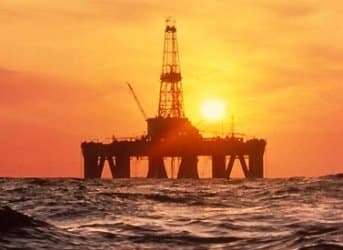Norway is Western Europe's largest oil producer and exporter, the world's second largest natural gas exporter after Russia, ranking fourth in world natural gas production and is an important supplier of both oil and natural gas to other European countries.
All of Norway's oil reserves are located offshore on the Norwegian Continental Shelf, which is divided into the North Sea, Norwegian Sea and Barents Sea sectors. The bulk of Norway's oil production currently occurs in the North Sea, with smaller amounts in the Norwegian Sea and new exploration and production activity occurring in the Barents Sea.
While Norway’s sector of the North Sea has been producing for more than four decades, oil companies are increasingly shifting their attention to Norway’s Arctic waters. Statistics Norway (SSB) reports that energy firms are projecting spending about $37.45 billion on operations on the Norwegian Continental Shelf in 2014, up from $2.34 billion in 2013.
Related Article: Arctic Extraction Has Huge Potential but High Risks
The surge into Norwegian Arctic waters is partly fueled by the implementation of a historic agreement between Norway and the Russian Federation, which defined their maritime boundaries in the Barents and Arctic Seas and resolved their 40-year old dispute. The treaty was ratified by both governments in early 2011 and went into effect in July 2011. According to the Norwegian Petroleum Directorate (Oljedirektoratet) the agreement provided Norway an additional 54,000 square miles of continental shelf. The agreement requires Norway and the Russian Federation to develop jointly oil and gas deposits which cross their boundaries, a 109,360 square mile maritime area astride their economic zones in the Barents and Arctic Seas.
According to the Norwegian Petroleum Directorate, the Norwegian shelf still holds 85.2 billion barrels of oil.
The largest operator in Norway is Statoil ASA, an international energy company with interests in more than 30 other countries. Statoil is 67 percent owned by the Norwegian government, which controls 80 percent of Norway's oil and gas production.
Despite Statoil’s prominence, international oil majors have a sizable presence in Norway. In 2005 the Norwegian government implemented legislation to subsidize oil and gas exploration, refunding 78 percent of exploration costs to the companies. In a further bid to attract foreign investment, taxes from onshore oil activities and from liquefied natural gas (LNG) shipped overseas were also reduced. The Norwegian government is currently focused on increasing recovery in mature producing fields, the further exploration of already producing areas, opening new areas to exploration and developing new subsea technology.
According to the Norwegian Petroleum Directorate February 2014 average daily production figures were roughly 1,931,000 barrels of oil, NGL and condensate, down 34, 000 bpd (about 2 percent) less than in January 2014 but up 6.8% from 1.448 million b/d in February 2013. February total gas sales were about 9.3 billion Sm3, which is 0.6 GSm3 less than the previous month. The Norwegian Petroleum Directorate projected that Norway’s 2014 oil production would average 1.463 million bpd, in line with the 2013 level of 1.464 million bpd.
Related Article: It’s Scotland’s Oil – and it Will Need a Lot of Investment
Norway’s energy future looks stable even as in recent years Norway has seen its production decline from a peak of over 3 million bpd ten years ago to less than half of that as recent major discoveries are set to come on stream in the next few years. The centerpiece of this new production is the massive Johan Sverdrup oil and gas field, the largest oil discovery in the world in 2011, which will start production in late 2019 and achieve peak output levels of over 500,000 bpd. The Johan Sverdrup oil field reserves are estimated at 1.7-3.3 billion barrels of recoverable oil. Under the terms of a 2012 cooperation, while Statoil will be the field’s operator, foreign partners include Maersk, Petoro, and Det Norske. According to Norwegian Petroleum Directorate projections, the Johan Sverdrup oil and gas field will account for half of Norway's oil production by 2040.
Added to the news that in 2013 Norway's oil fund, the world's largest sovereign wealth fund with assets of $840 billion, earned 15.9 percent, or about $115 billion, on its investments, the Norwegian government has a future as bright as the midnight sun.
By John Daly of Oilprice.com


















